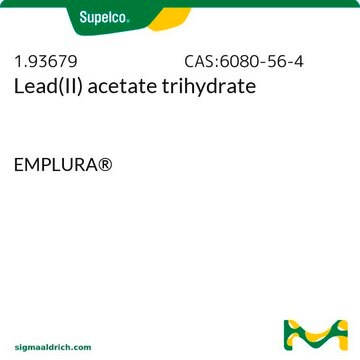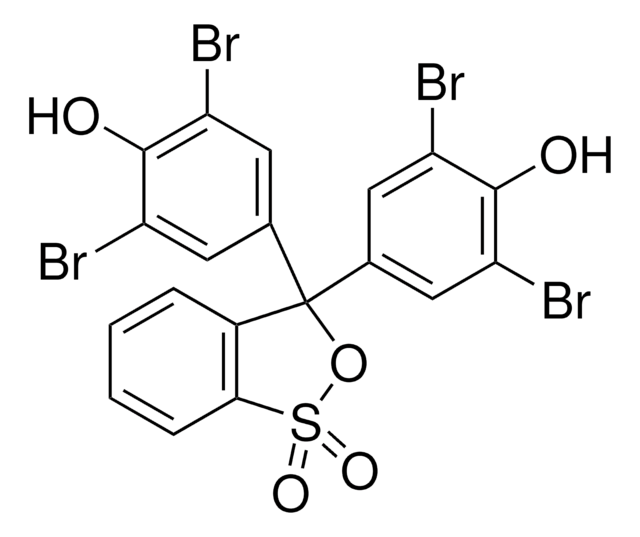32307
Lead(II) acetate trihydrate
puriss. p.a., ACS reagent, reag. ISO, reag. Ph. Eur., 99.5-102.0%
About This Item
Recommended Products
grade
ACS reagent
puriss. p.a.
Quality Level
agency
USP/NF
reag. ISO
reag. Ph. Eur.
assay
99.5-102.0%
form
solid
impurities
≤0.005% insoluble in acetic acid
mp
75 °C (dec.) (lit.)
anion traces
chloride (Cl-): ≤5 mg/kg
nitrate (NO3-): ≤10 mg/kg
cation traces
Ca: ≤50 mg/kg
Cd: ≤5 mg/kg
Cu: ≤5 mg/kg
Fe: ≤10 mg/kg
K: ≤50 mg/kg
Mg: ≤50 mg/kg
Na: ≤50 mg/kg
Zn: ≤5 mg/kg
SMILES string
O.O.O.CC(=O)O[PbH2]OC(C)=O
Looking for similar products? Visit Product Comparison Guide
Related Categories
General description
Application
signalword
Danger
Hazard Classifications
Aquatic Acute 1 - Aquatic Chronic 1 - Carc. 2 - Eye Dam. 1 - Lact. - Repr. 1A - STOT RE 1
target_organs
Central nervous system,Blood,Immune system,Kidney
Storage Class
6.1C - Combustible acute toxic Cat.3 / toxic compounds or compounds which causing chronic effects
wgk_germany
WGK 3
flash_point_f
Not applicable
flash_point_c
Not applicable
Choose from one of the most recent versions:
Already Own This Product?
Find documentation for the products that you have recently purchased in the Document Library.
Customers Also Viewed
Our team of scientists has experience in all areas of research including Life Science, Material Science, Chemical Synthesis, Chromatography, Analytical and many others.
Contact Technical Service











